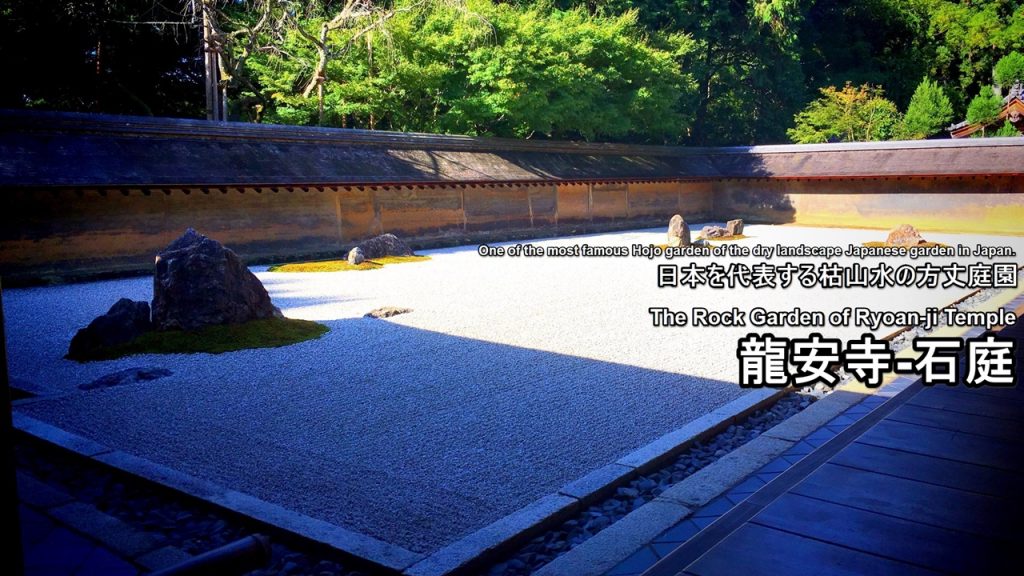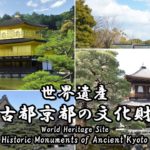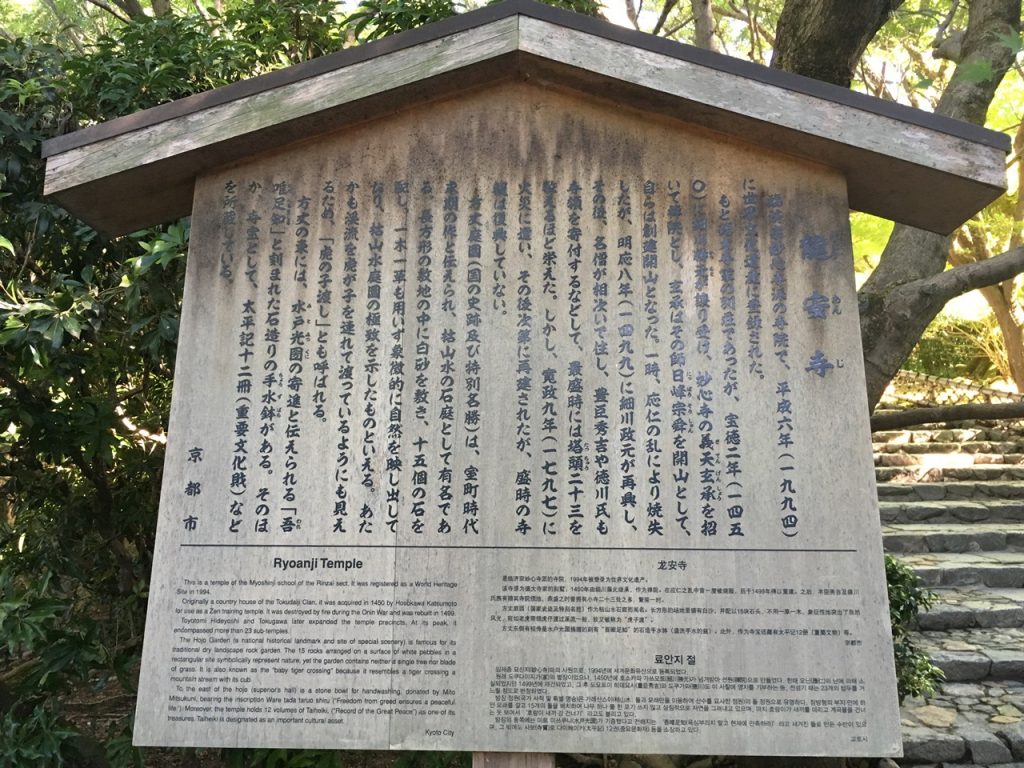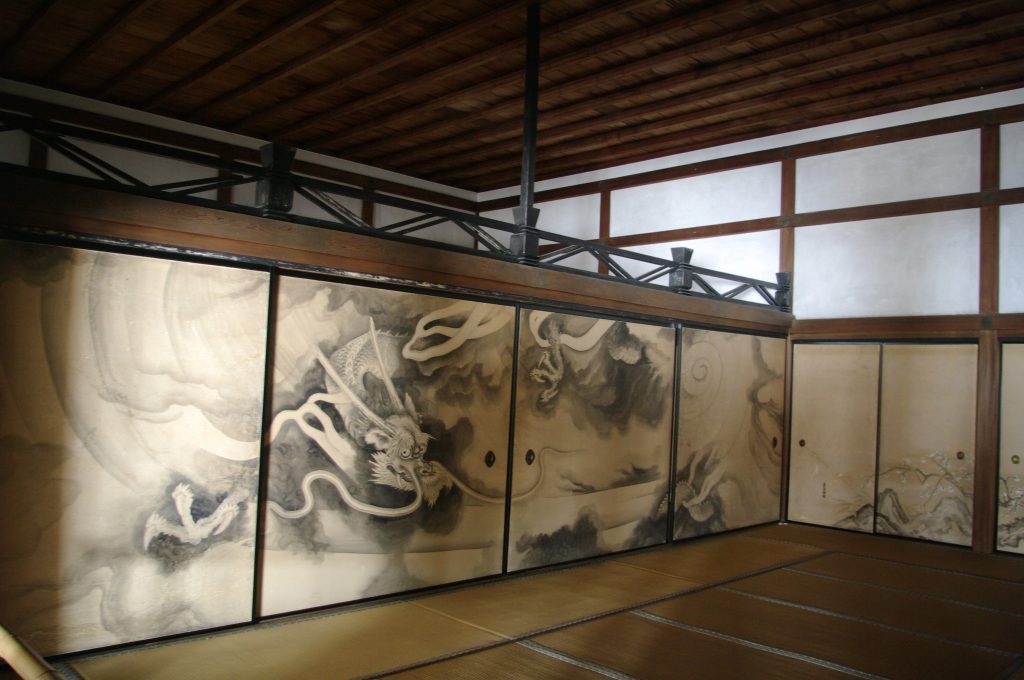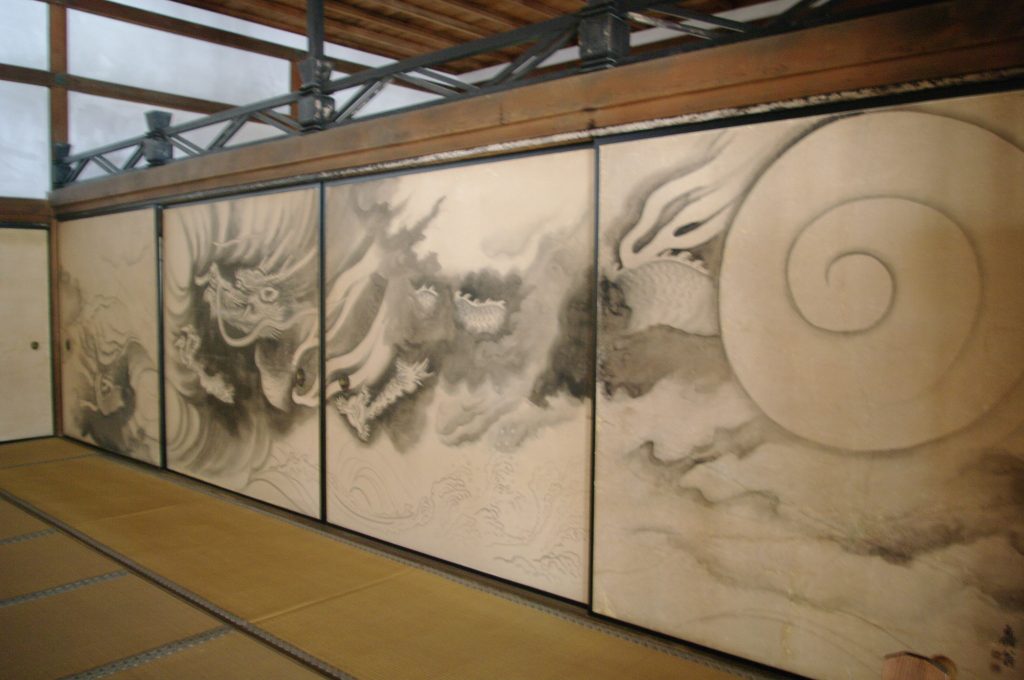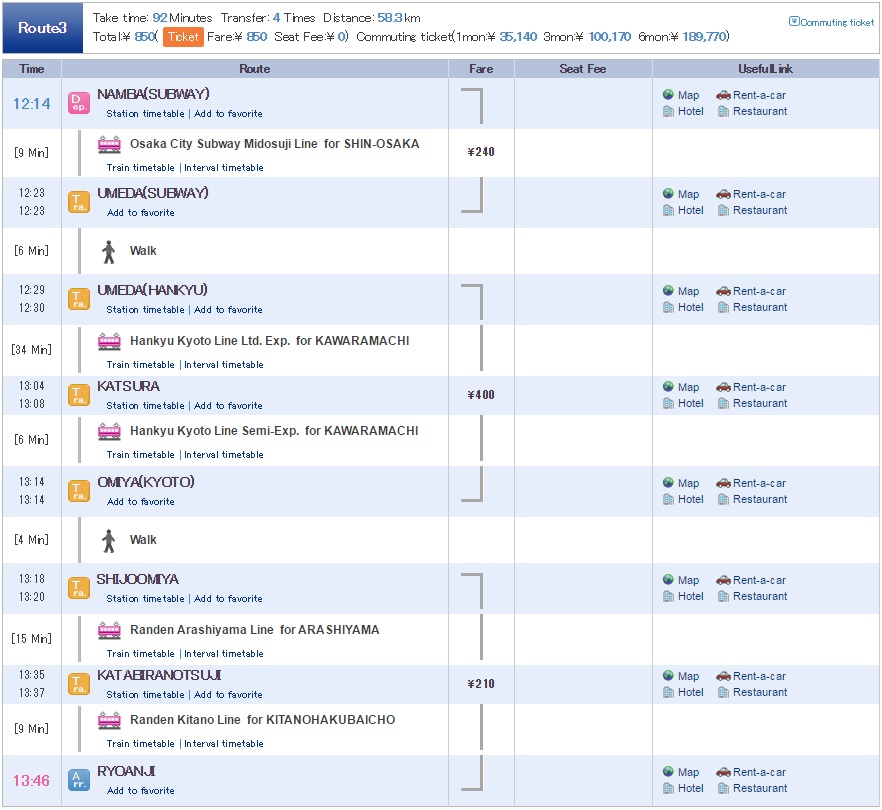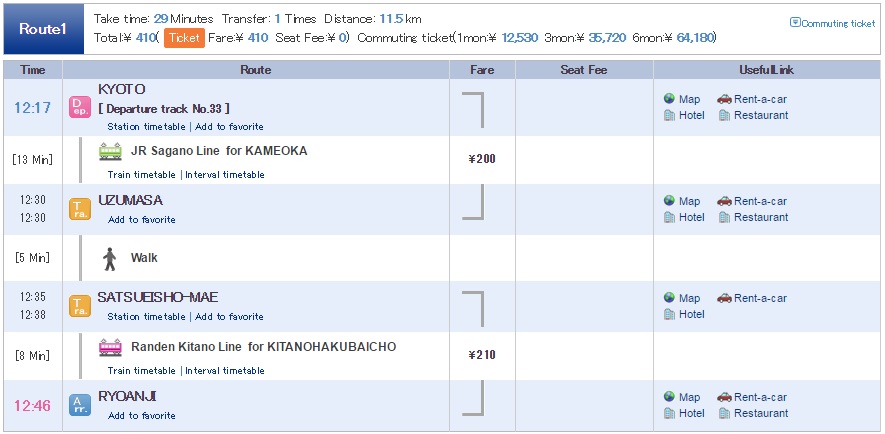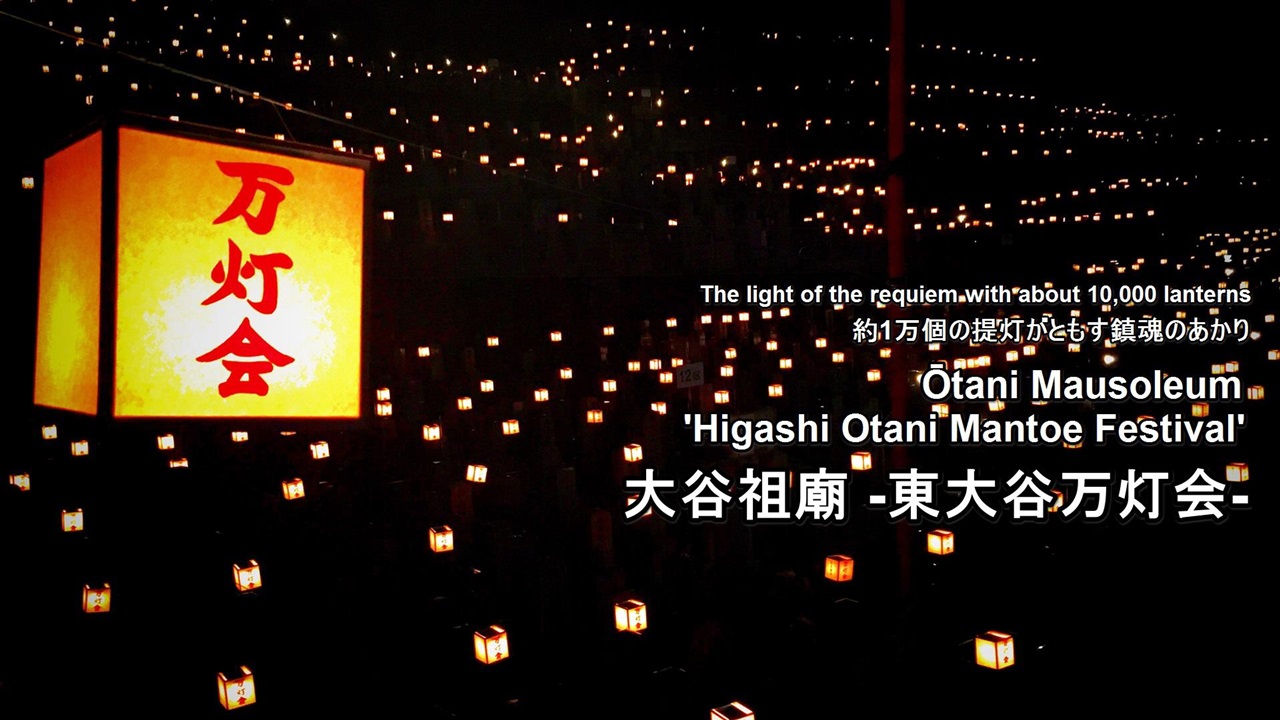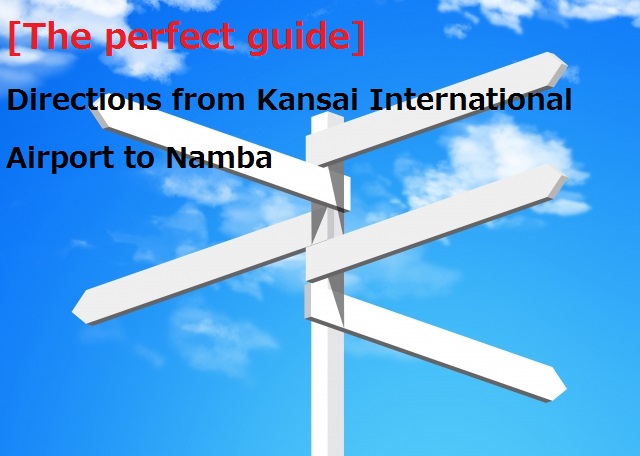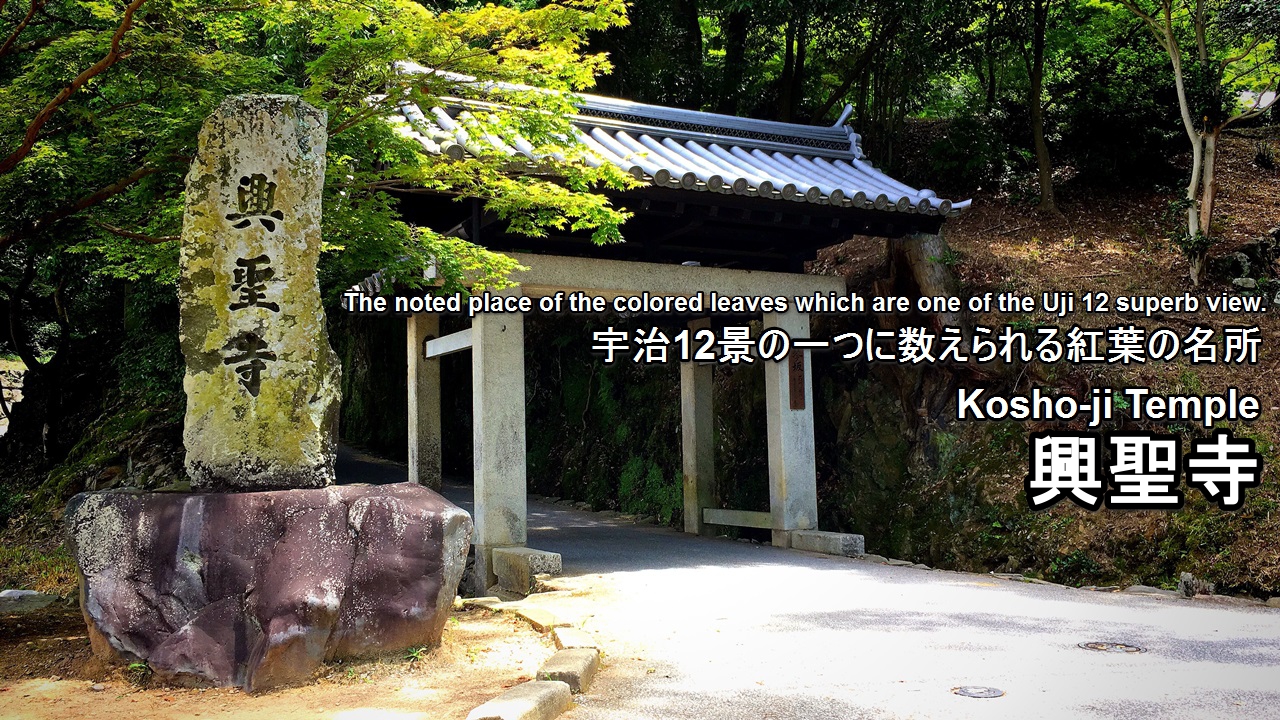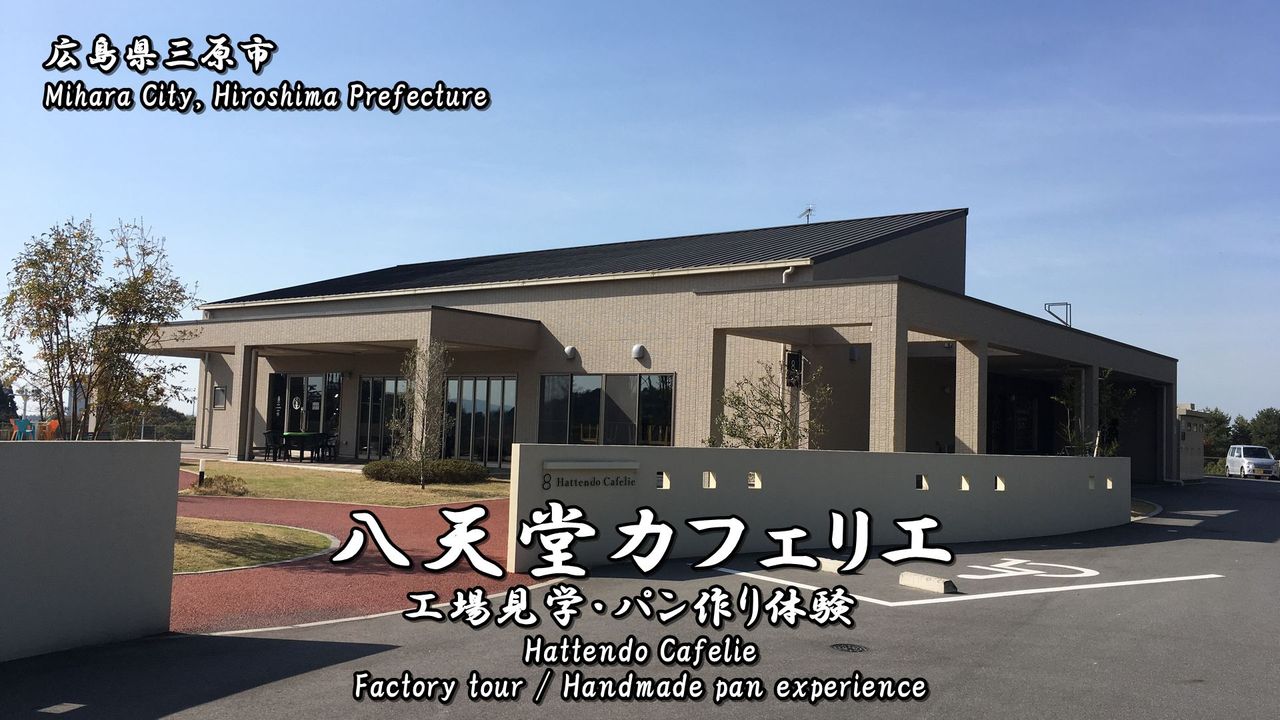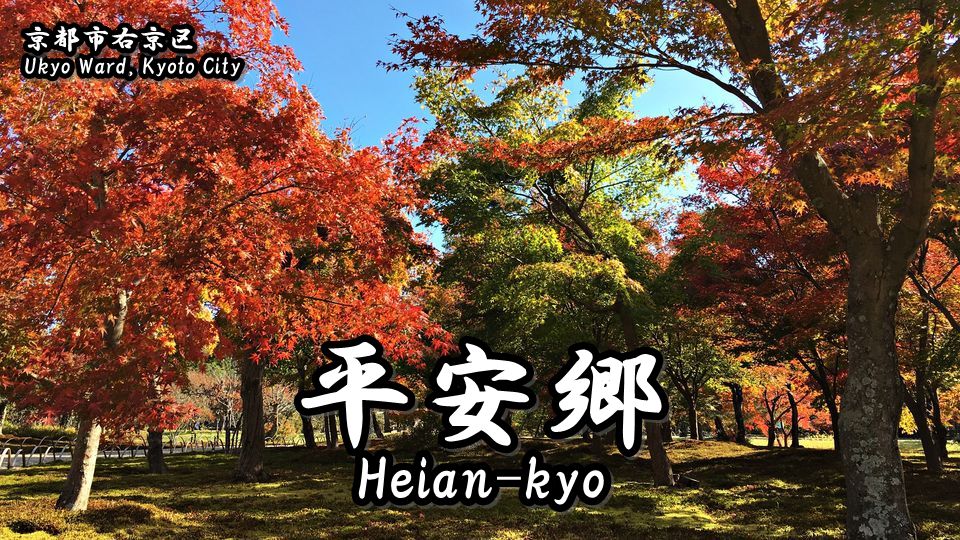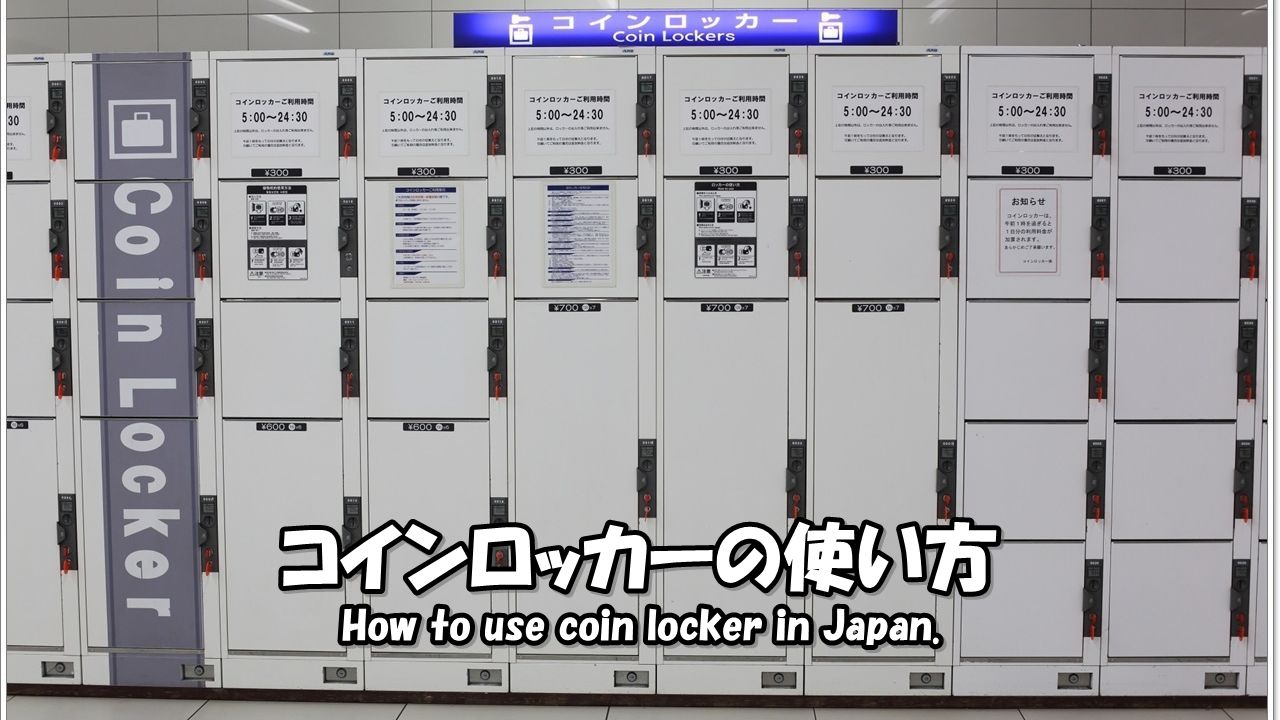There is the Japan’s most famous Hojo garden of the dry landscape japanese garden in Ryoan-ji temple.
And this temple has been designated as the Michelin green guide ★★★(best rank) and the World Heritage List as part of the cultural assets of ancient capital of Kyoto.
The garden of this temple is called “Rock garden of Ryoan-ji temple”, and was made in the times when Zen Buddhism culture developed.
And it is said that the composition of this garden is expressed of a Zen-like state.
Contents:
- About World Heritage ‘Historic Monuments of Ancient Kyoto’
- About Ryoan-ji Temple
- “方丈(Hojo)” and “石庭(Rock garden)”.
- Goshuin of Ryoan-ji temple.
- How to get to Ryoan-ji Temple
1.About World Heritage ‘Historic Monuments of Ancient Kyoto’
17 places of temples and shrines of Kyoto are designated in ‘Historic Monuments of Ancient Kyoto’.
↓Details of the “Historic Monuments of Ancient Kyoto” is here.↓
Ryoan-ji Temple has been designated as the World Heritage List as part of the cultural assets of ancient capital of Kyoto.
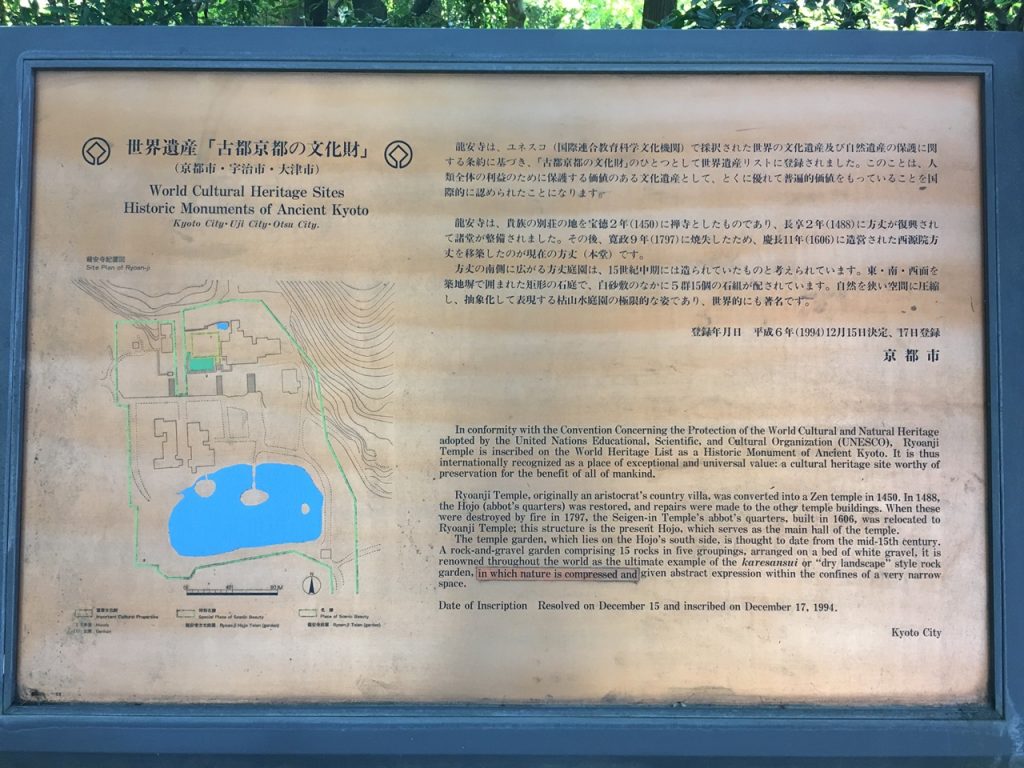
2.About Ryoan-ji Temple
Ryōan-ji (Shinjitai: 竜安寺, Kyūjitai: 龍安寺, The Temple of the Dragon at Peace) is a Zen temple located in northwest Kyoto, Japan. It belongs to the Myōshin-ji school of the Rinzai branch of Zen Buddhism. The Ryōan-ji garden is considered one of the finest surviving examples of kare-sansui (“dry landscape”), a refined type of Japanese Zen temple garden design generally featuring distinctive larger rock formations arranged amidst a sweep of smooth pebbles (small, carefully selected polished river rocks) raked into linear patterns that facilitate meditation. The temple and its gardens are listed as one of the Historic Monuments of Ancient Kyoto, and as a UNESCO World Heritage Site.
引用(citation):https://en.wikipedia.org/wiki/Ry%C5%8Dan-ji
Open:8:00~17:00(March ~ November)、8:30~16:30(December ~ February)
Admission Fee:500 yen(high school students or older),300 yen(middle school students or younger)
Adress:13, Ryoanji Goryonoshitacho, Ukyo-ku Kyoto-shi, Kyoto, 616-8001, Japan
Phone Number:+81-75-463-2216
The official name of 龍安寺(Ryoan-ji temple) is “大雲山龍安寺(Daiunzan Ryoan-ji)”.
It comes from that the Sango (Mountain Name) of the Ryoan-ji temple is “大雲山(Daiunzan)”.

Admission fee is 500 yen (Adults).
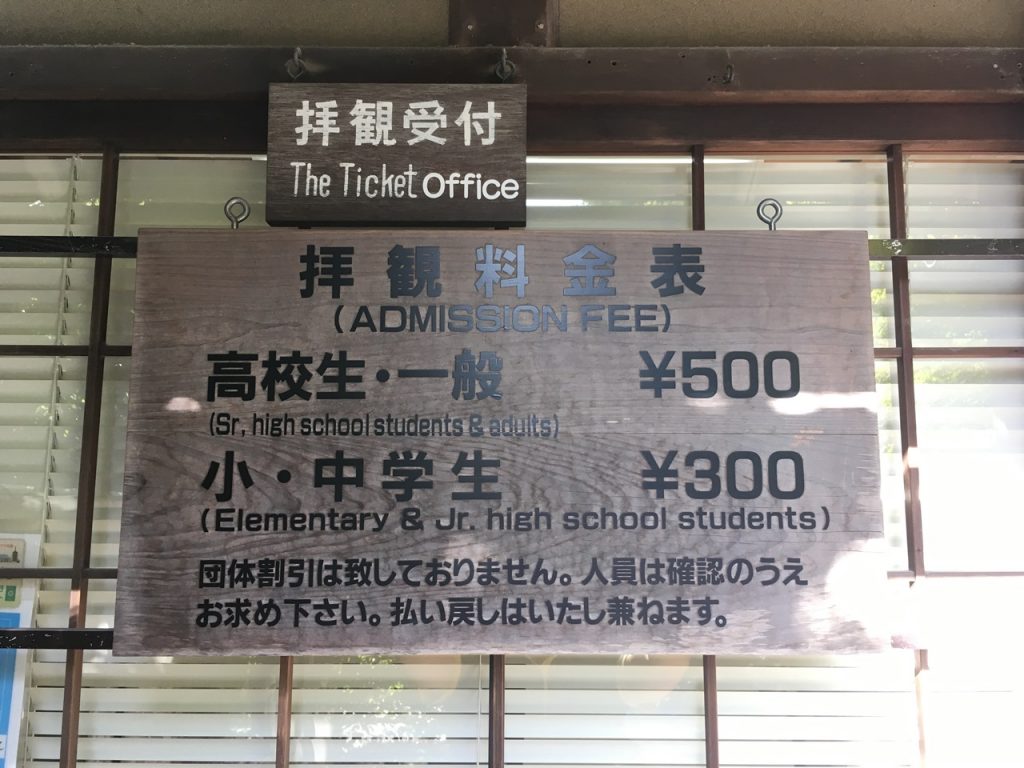
This is the panoramic view of Ryoan-ji Temple.
In old days, “the Chisen Kaiyu style garden (a style of Japanese garden with a path around a central pond)” was more famous than “the rock garden”.
When British Queen Elizabeth visited it in 1975, a rock garden was praised highly. Then a rock garden became world-famous.
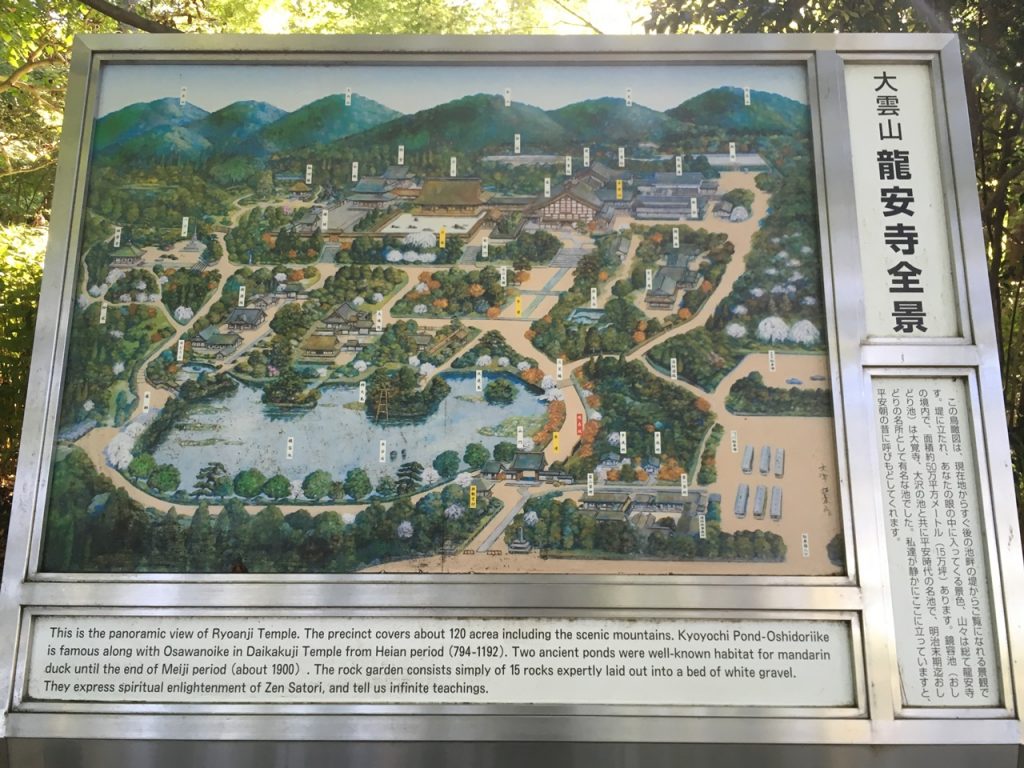
Let’s pass through the main gate of this temple and enter the precincts of the temple.
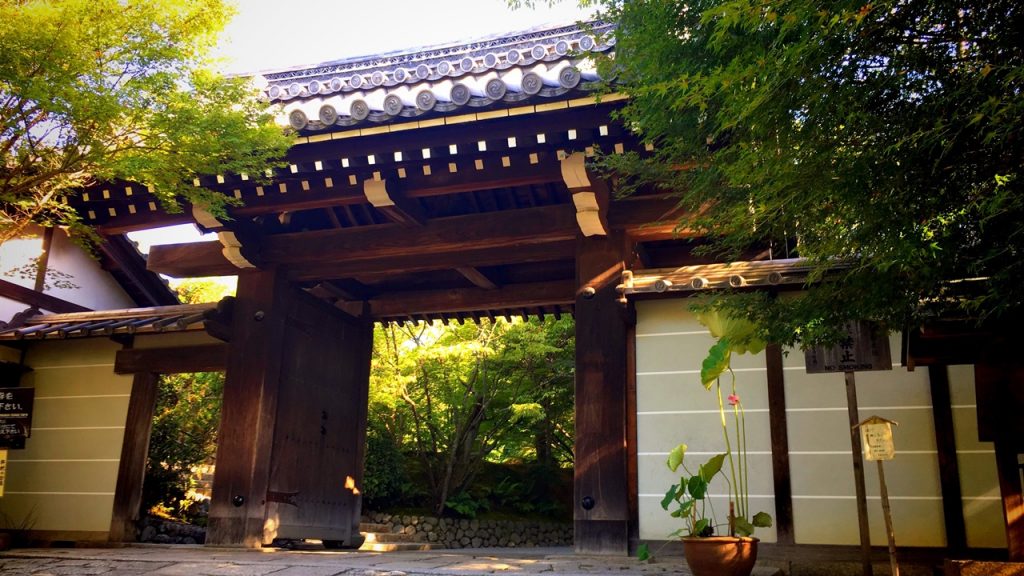
鏡容池(Kyoyochi Pond) which is the Chisen Kaiyu style garden (a style of Japanese garden with a path around a central pond) is on the left of the precincts.
This pond is famous for a lotus and a mandarin duck.
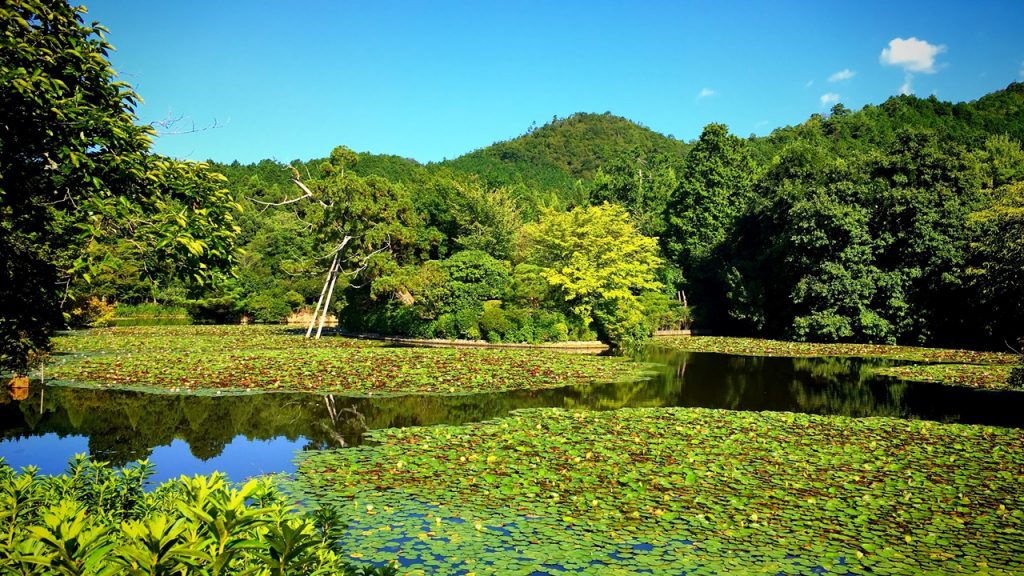
In the island of this pond, there is a small Shinto shrine which is enshrined Benzaiten.
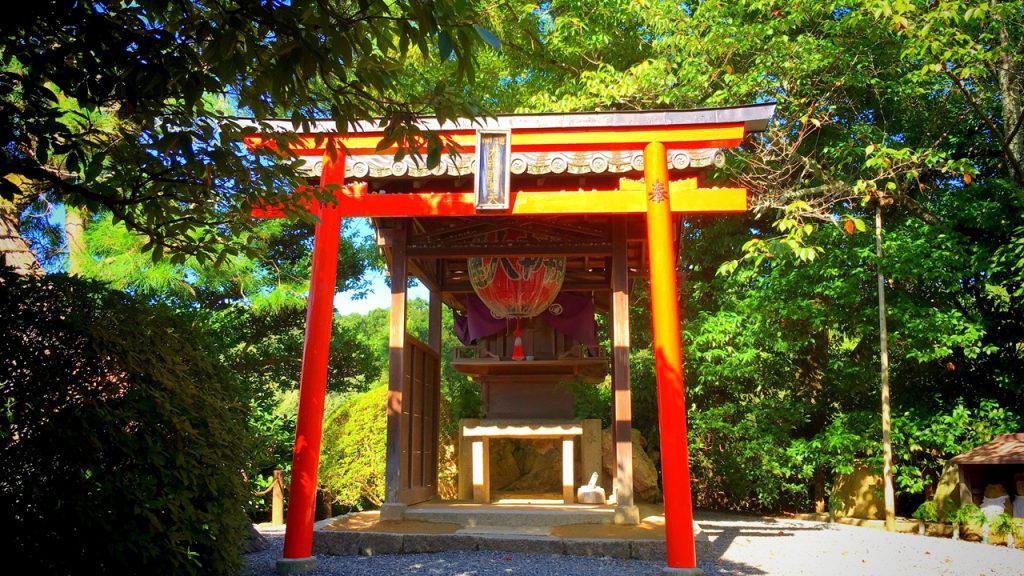
This is the 大珠院(Daishu-in Temple) which is a minor Zen temple of Ryoan-ji Temple to see from 鏡容池(Kyoyochi Pond) .
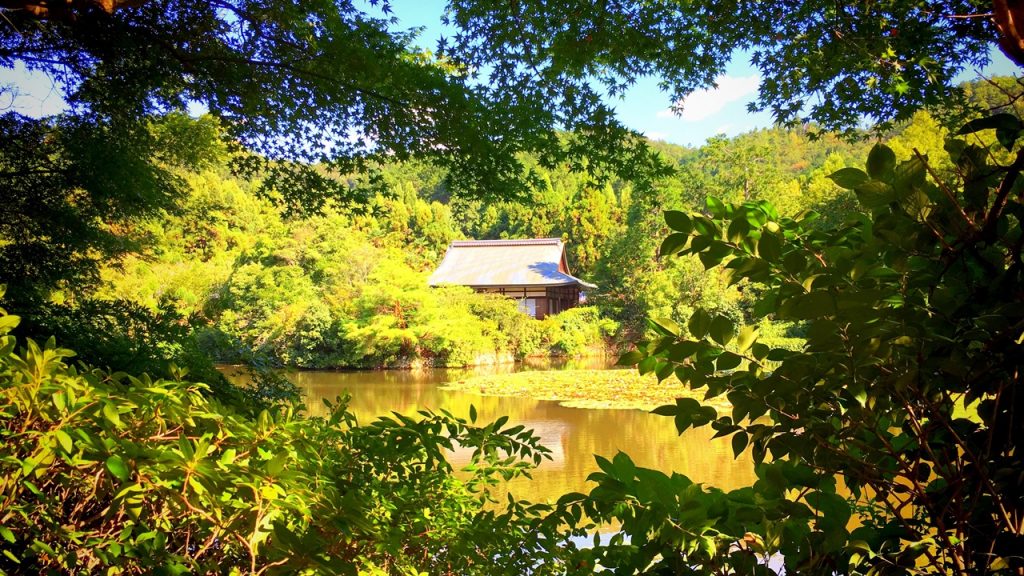
This is a charnel in the inner part of the precincts of this temple.
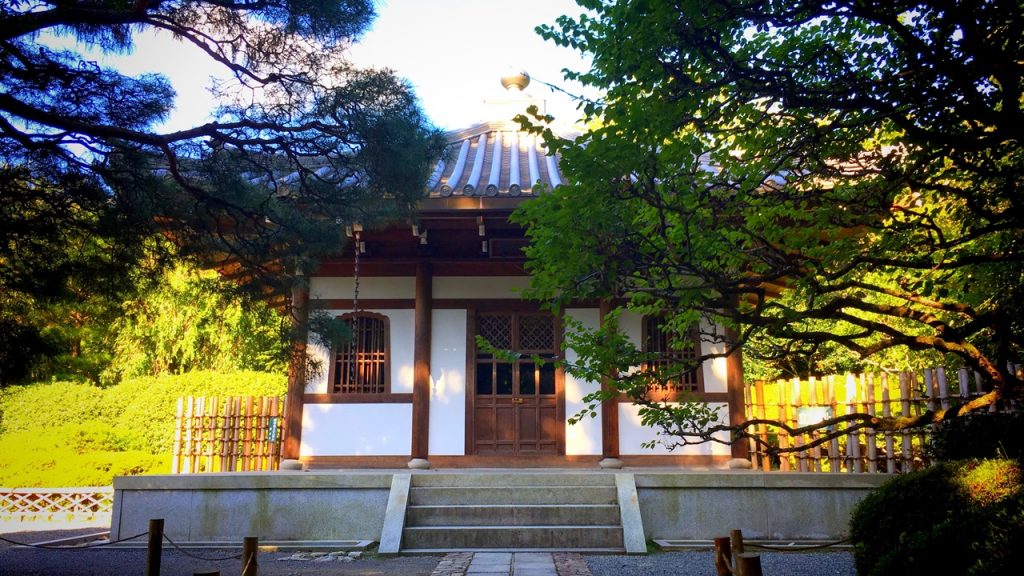
There is a wisteria trellis in the edge of this pond.
This pond is also a famous place of the wisteria and the cherry tree.(○´艸`)
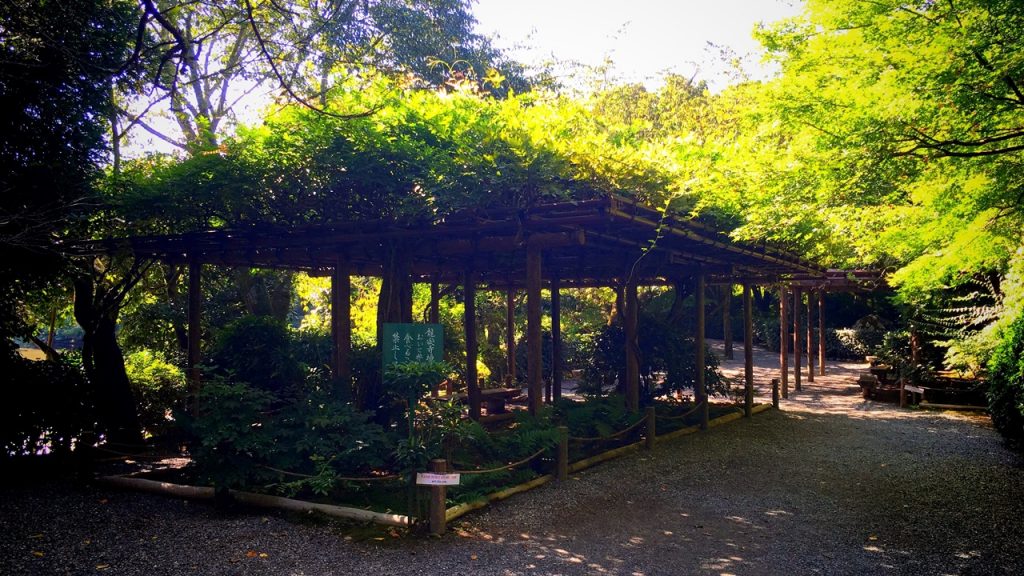
This is the 西源院(Seigen-in) which is famous for Yudofu(boiled bean curds).
We can eat a popular menu called 七草湯豆腐(Nanakusa-Yudofu) while looking at a Japanese garden here.

This is the 勅使門(Chokushi-mon gate (the Gate for the Imperial Envoys)) which is the entrance of 方丈(Hojo).
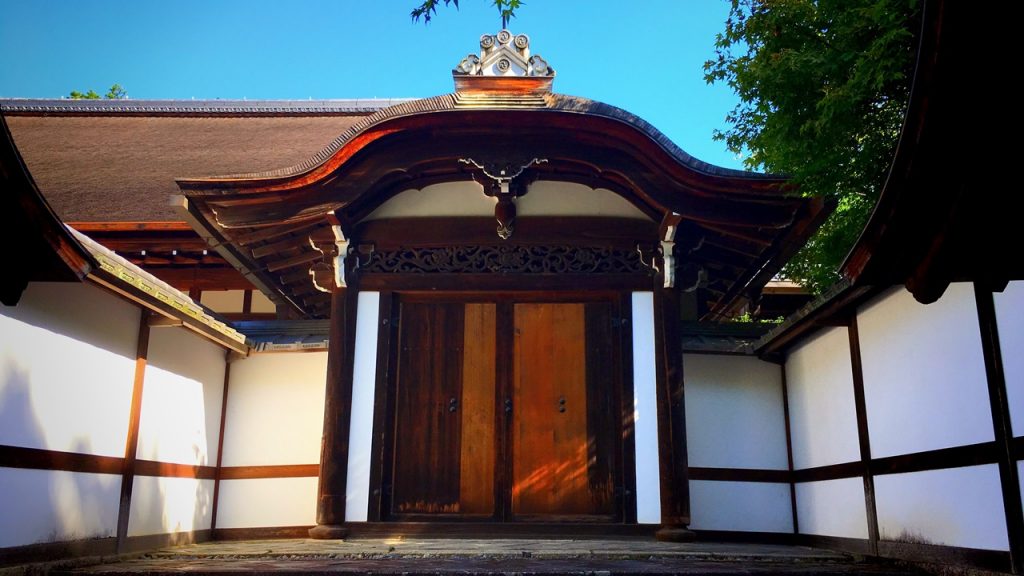
3.”方丈(Hojo)” and “石庭(Rock garden)”.
“方丈(Hojo)” and “石庭(Rock garden)” is located at the inner part of the precincts of this temple.
“方丈(Hojo) ” is the living room of the chief priest of the Zen Buddhism temple.
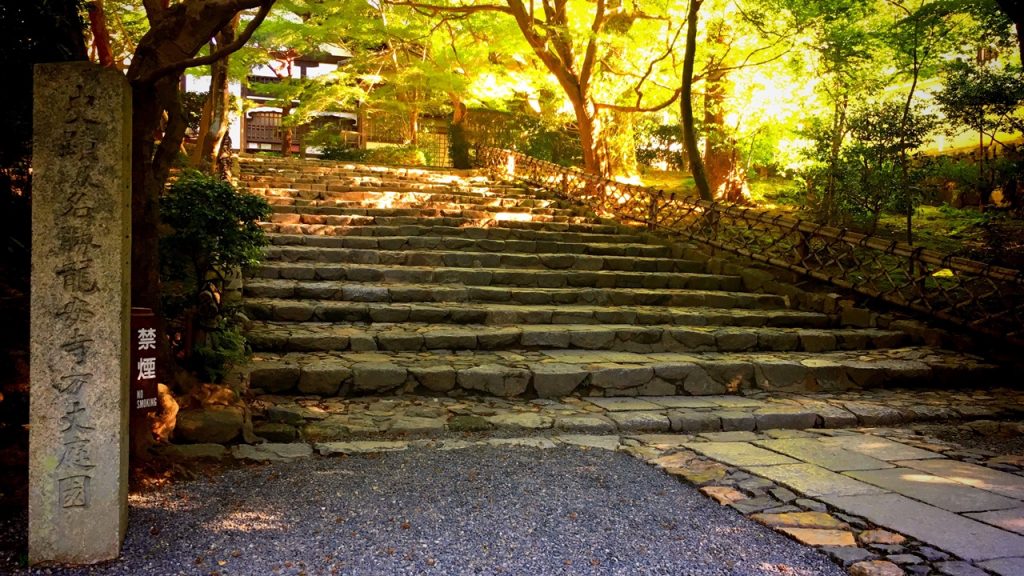
A fence which is called “龍安寺垣 (Ryoan-ji temple fence)” are beside a stone stairway.
This fence is made slightly low than other common fence.
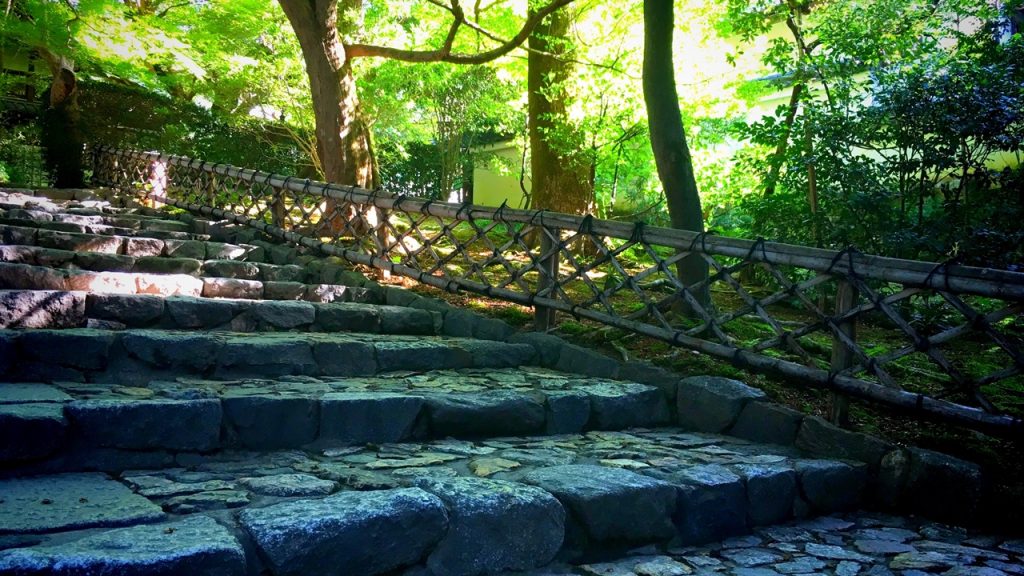
This is 庫裡(Kuri(priest’s kitchen and living room)) which are the building of the entrance of the garden.
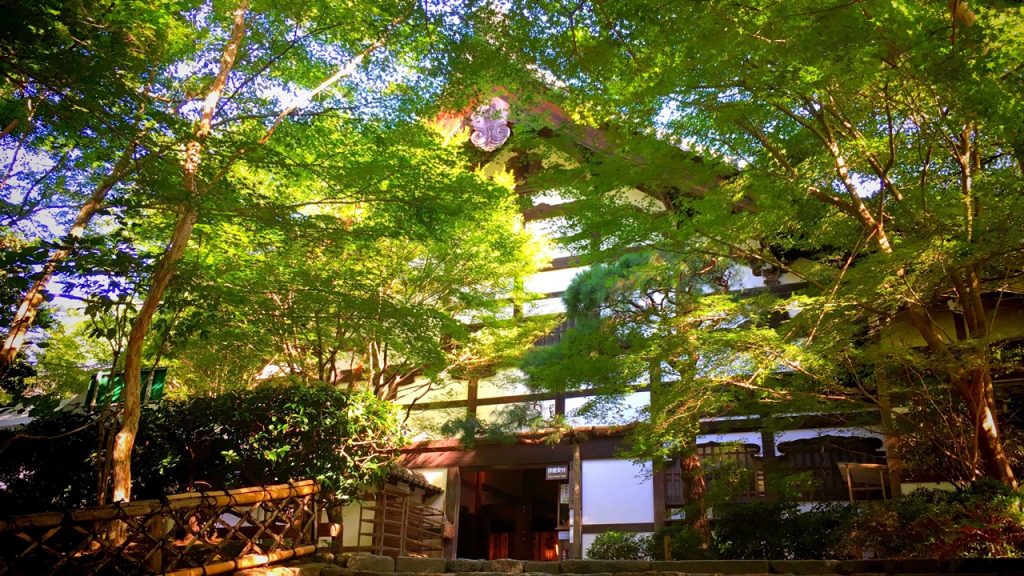
The folding screen which was drawn by 寺西乾山(Teranishi Kenzan) of scholars of Chinese classics is displayed at the entrance.{
One paragraph of “飲酒(the drinking)” of the Chinese poetry is written on this folding screen.
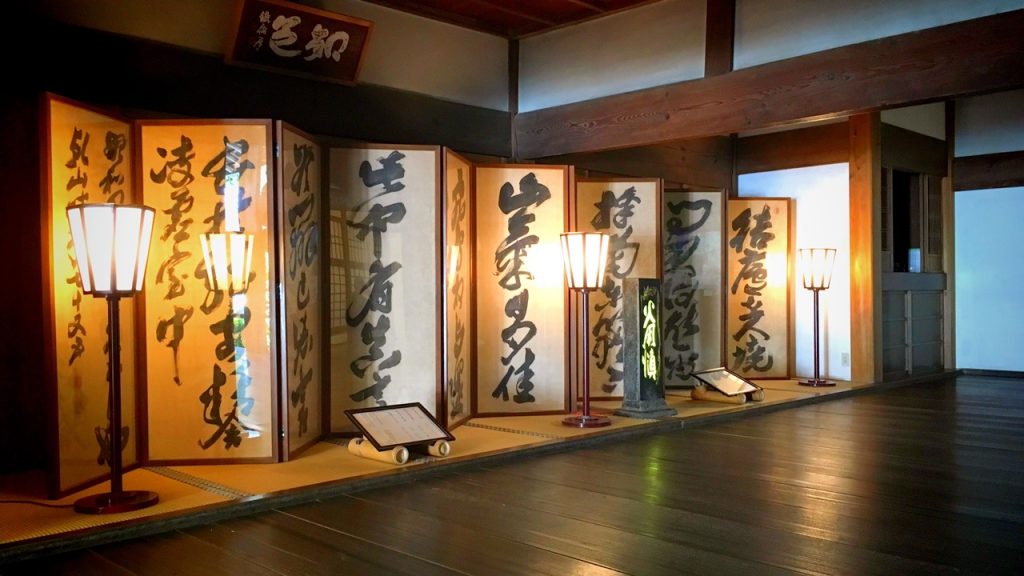
This is a screen which was drawn by 寺西乾山(Teranishi Kenzan) of scholars of Chinese classics, too.
The character which was written on this screen is “雲関(Unkan)”.
雲関(Unkan) means the entrance of “大雲山(Daiunzan)” which is the Sango (Mountain Name) of the Ryoan-ji temple.
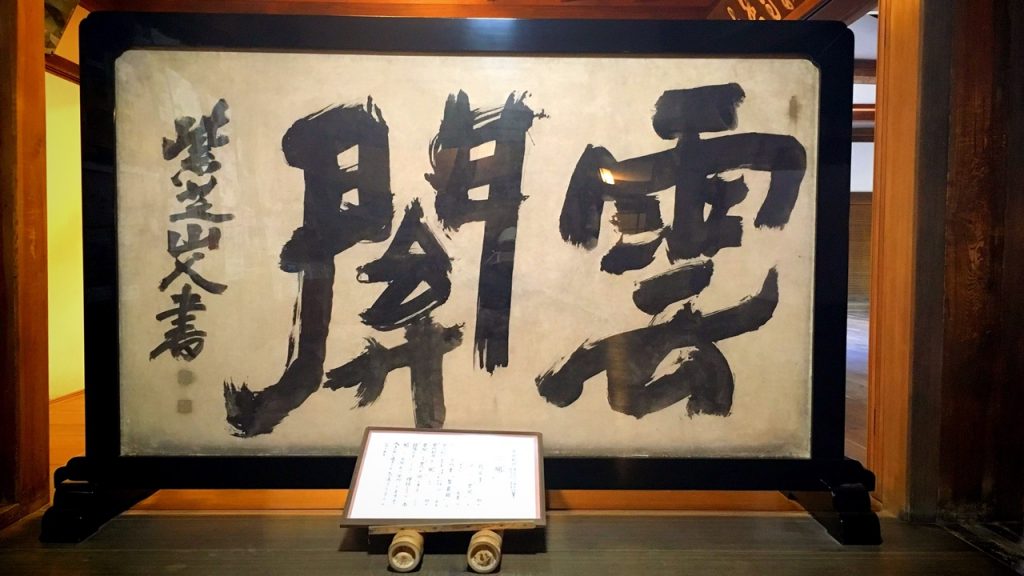
This is the rock garden which is one of the most famous garden of the dry landscape Japanese garden in Japan.
This rock garden measures only 25 meters from east to west and 10 meters from south to north.
15 stones are placed in this rock garden.
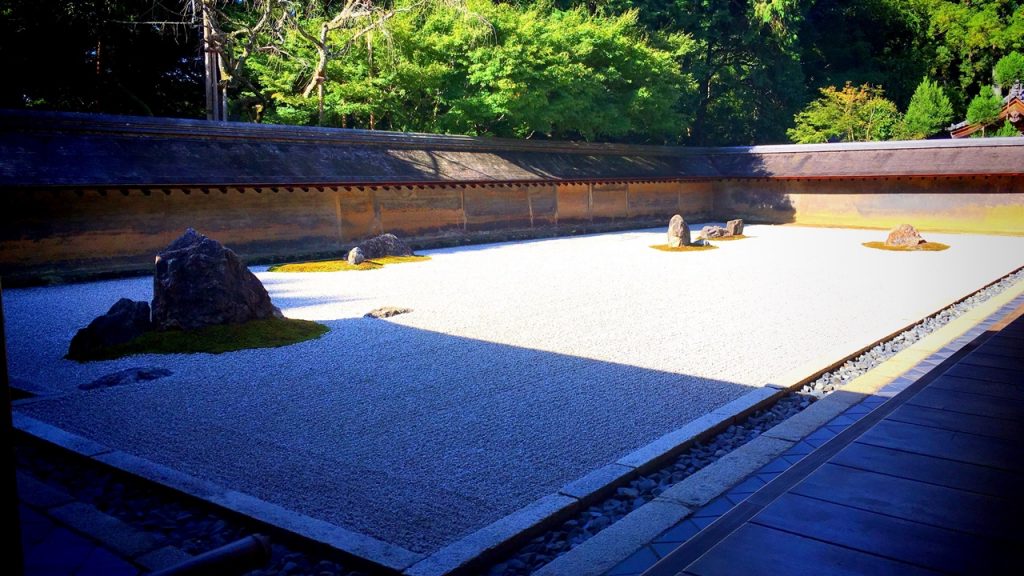
■Youtube:龍安寺-石庭(The rock garden at Ryoan-ji Temple)
It is said that the garden was designed in such a manner that 1 of the 15 stones is always hidden behind another, no matter where it is viewed from.
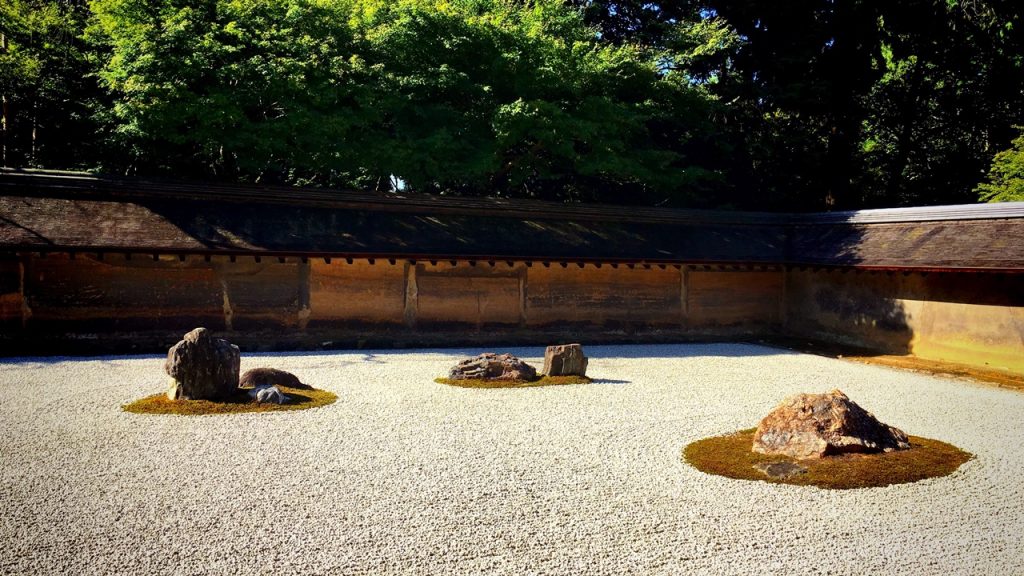
A small stone is covered in the backside of the big stone.
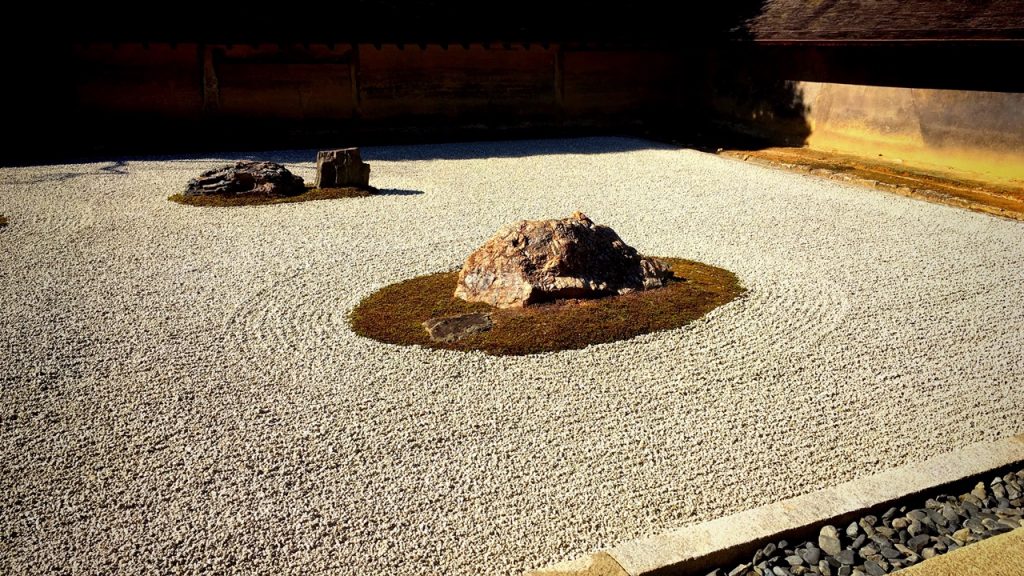
The rock garden is surrounded by earthen walls called “油土塀(Abura-dobei)”.
“油土塀(Abura-dobei) ” mixes red earth and rapeseed oil and is made. This earthen wall has a pitch gap of approximately 50cm in east and west.
According to another report, it is said that it is using perspective representation.(○´艸`)
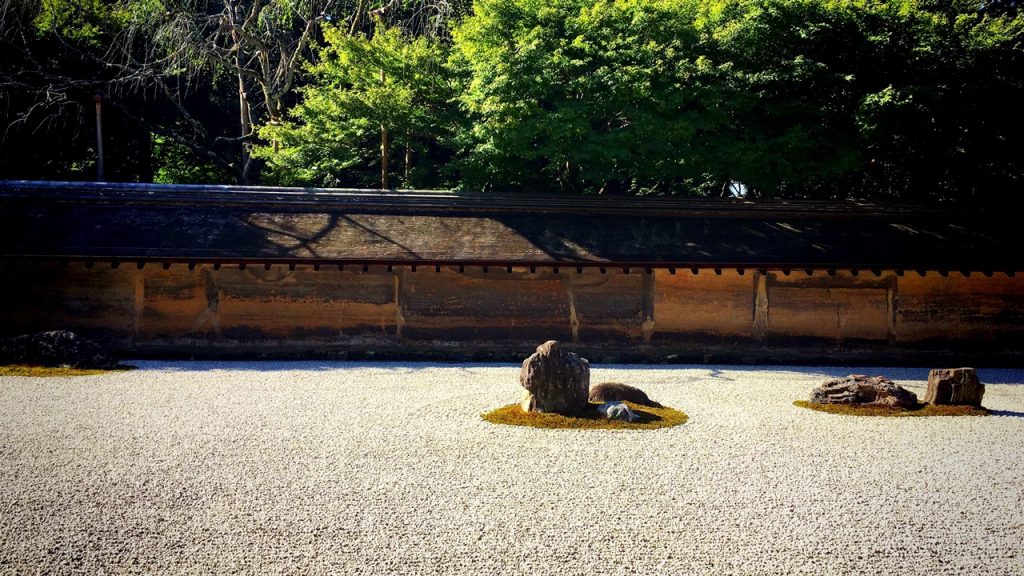
15 stones in the rock garden are displayed in order of seven, five, three from the east.
Thus, this garden is called “七五三の庭(The Seven-Five-Three Garden)”.
(The odd numbers such as “3”, “5” and “7” are said to be a happy number from old days.)
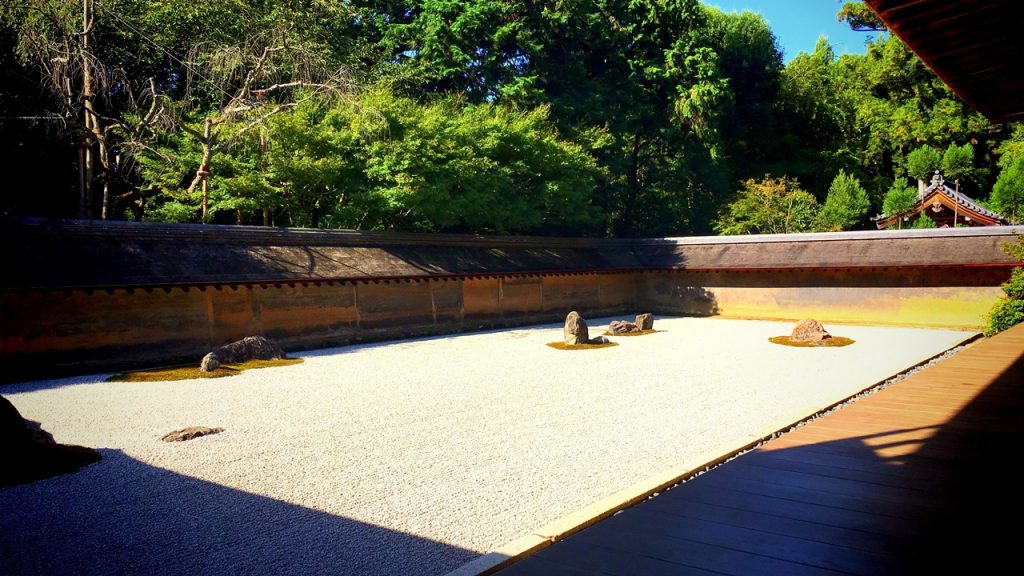
The current building removed and reconstructed the building of 西源院(Seigen-in) which was the minor Zen temple of Ryoan-ji temple.
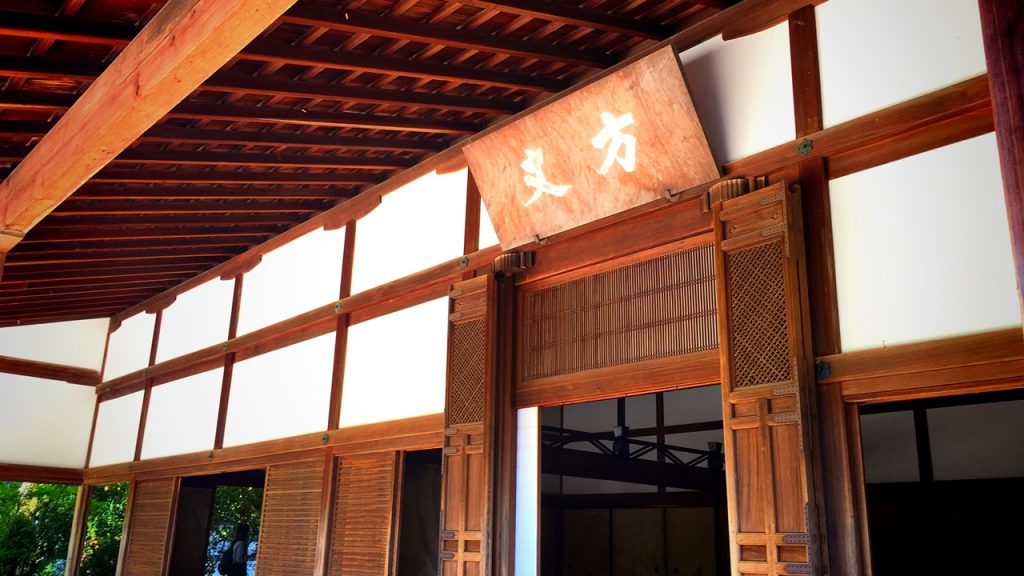
This is the inside of 方丈(Hojo). This is a room with sense of openness very much.
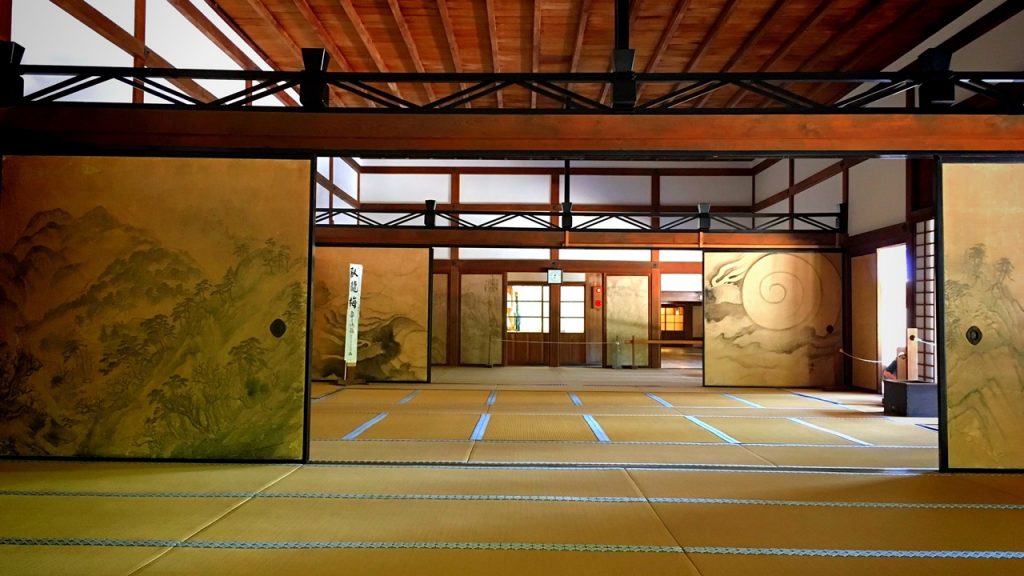
The fusuma picture drawn by 皐月鶴翁 is displayed in the room.
The fusuma picture which a Kano school drew was displayed in this room in old days.
However, these fusuma picture has been sold off during Haibutsu-kishaku (a movement to abolish Buddhism) in the early Meiji period…
A part of the fusuma picture is possessed now in Metropolitan Museum of Art and the Seattle Art Museum.
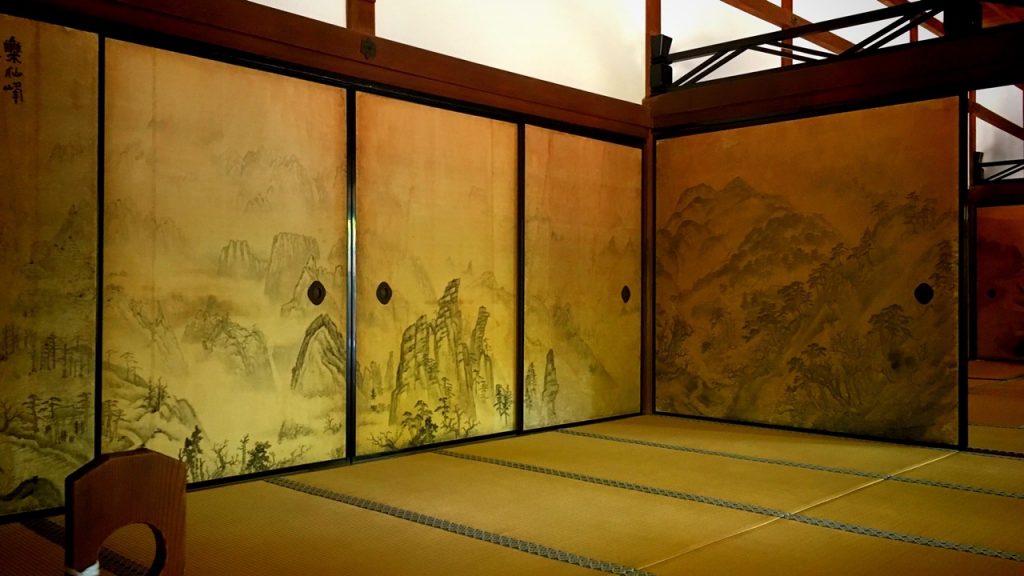
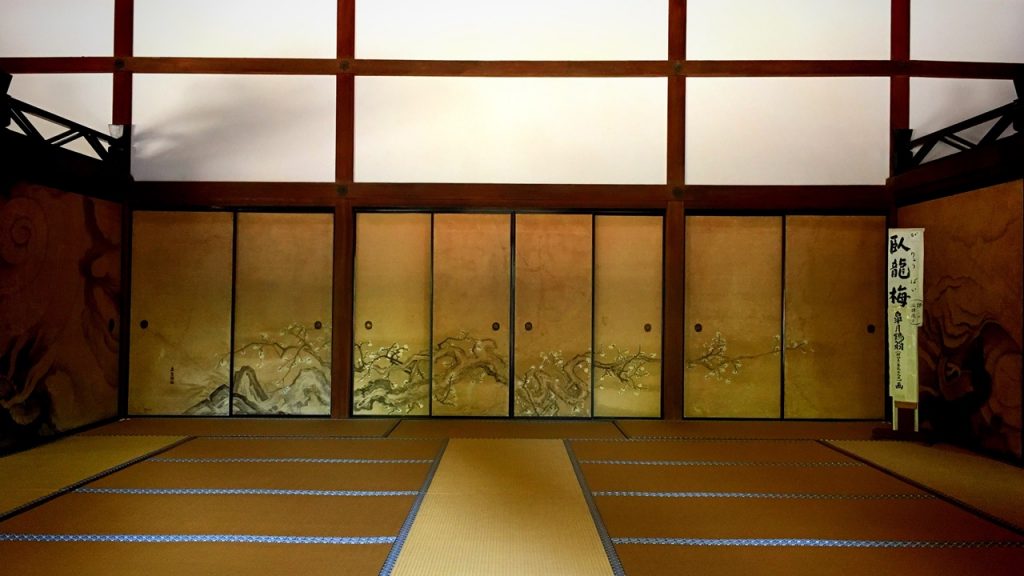
This is a fusuma picture of “臥龍梅(The dragon which takes a break and the plum tree)”.
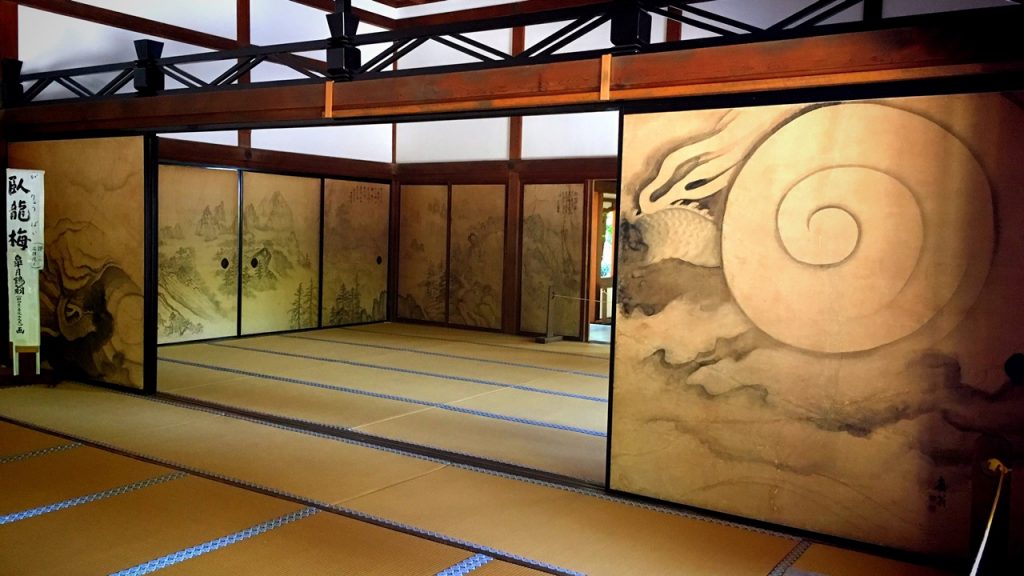

When a sliding door was closed, a dragon appears. (○´艸`)
引用(citation):http://photozou.jp/user/top/218761
The Japanese oldest Wabisuke Camellia is planted in the garden of 方丈(Hojo).
It is said that this camellia was a favorite of Hideyoshi Toyotomi.
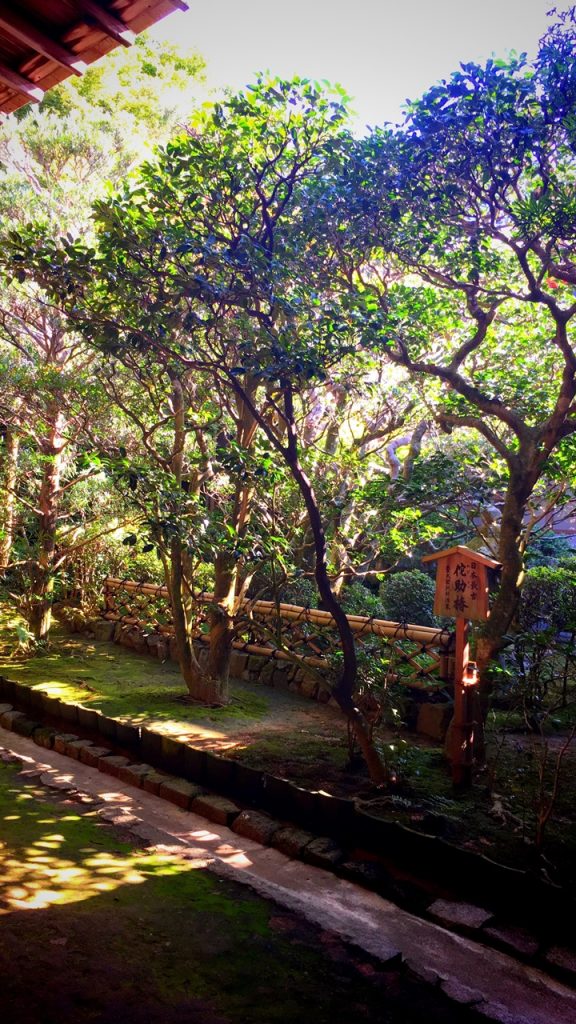
This is the “蹲踞((Tsukubai)(Stone Water-Basin))” in the rear of 方丈(Hojo).
Four Chinese characters, 吾唯足知 (“ware tada taru wo shiru” (I simply know what is enough))” are carved on the Tsukubai stone.
The feature of the stone is the square water hole in the centre of the stone, where the water is stored, forms a part of each letter.
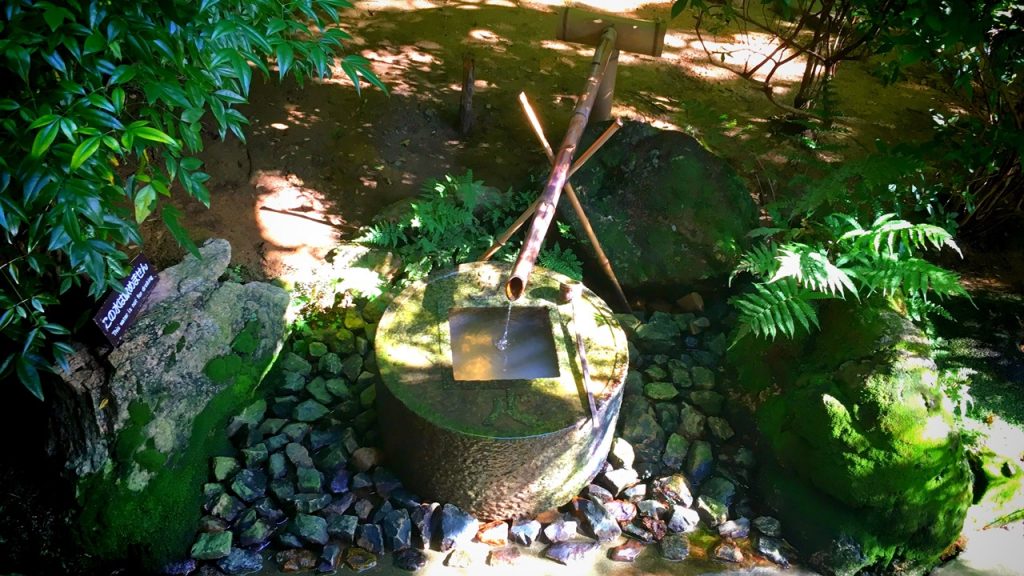
4.Goshuin of Ryoan-ji Temple
This Temple’s Sumigaki(The words which was written with a sumi(black ink)) is “石庭(The Rock garden)”.

5.How to get to Ryoan-ji Temple
●Map of World Heritage ‘Historic Monuments of Ancient Kyoto’
The nearest station of Ryoan-ji Temple is “Randen Kitano Line Ryoanji Station”.
It is about 10-minutes walk from the station.
■Randen Kitano Line Ryoanji Station→Ryoan-ji Temple
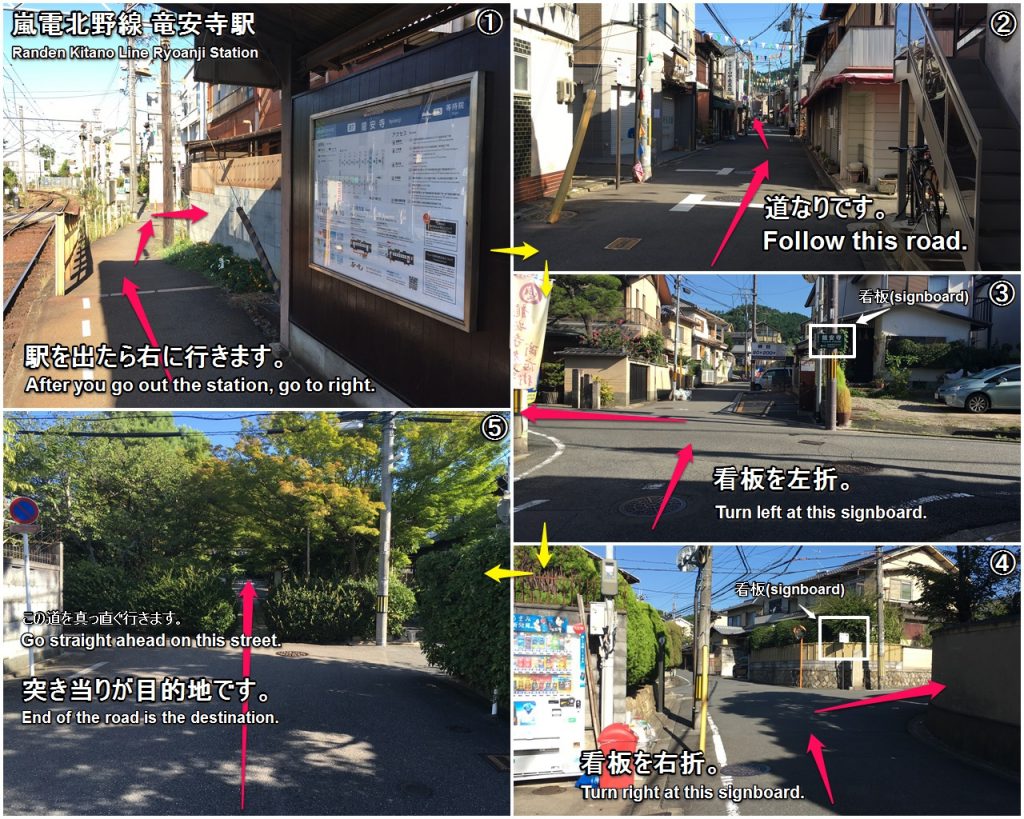
How did you like it?
Please try to go to this place.
Have a nice trip! XD
<Let’s search the sightseeing information of Kansai in Japan on ‘Japan’s Travel Manual‘!!>
<This site introduces the easiest way to get Japanese (Kansai) sightseeing spots to you.>

